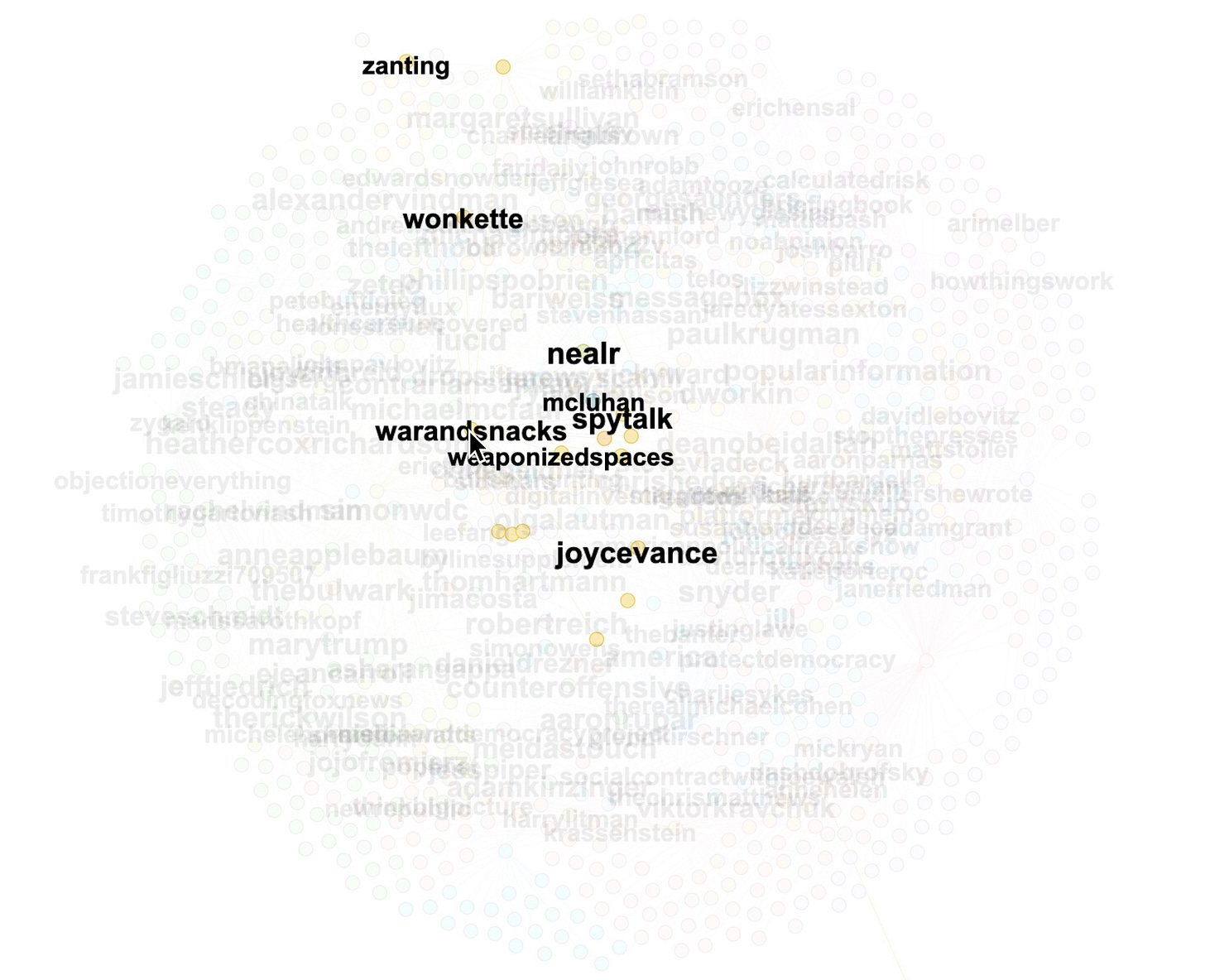Substack: Your World
An easily produced visualization of where you fit.
This is a very early example of what can be done with Nick Hagar’s unofficial Substack API Python package.
What you see here are accounts on my subscription list and who they themselves read.
And here is what happens when I highlight my personal Substack. That’s not all of my subscriptions - it’s the ones that have multiple subscribers in this set.
Here’s my friend, Libby Shaw, who can’t hang on to a working phone to save her life, so she’s been locked out of War & Snacks for a couple months now.
Stated another way, that network is my inputs, and their inputs. There are 979 accounts there with 1,300 subscriber relationships.
I started looking at the recommendations network … and found some bugs in the Substack interface itself for this area. These things labeled as Inactive are most certainly NOT idle, and trying to remove one of them does not work. The API implementation is faithful to the web interface - an API call on my account only sees these first five recommendations.
That being said, the recommendation network is the opposite side of the subscriptions coin. If you look just left of center you’ll see the big issue in this area - nealr is my Substack, rauhauser.net is the domain associated. The API also doesn’t do a good job of starting with a custom domain and getting to the next level.
Conclusion:
The two sides of the coin for a Substack are going to be a useful way to understand your presence.
The next step for me will be a lot of work on metrics, making this run smoothly, and probably starting with Gephi and then transitioning to direct NetworkX output once I establish a network layout.
Someone is going to have to do the presentation side of this, making it all pretty on a web page. That ain’t me, but there’s a Signal room full of folks, some of whom might be the ones to tend to that problem.
And once I get my part a bit smoother, there will be the ability to compare your presence to one or two other accounts. That’ll makes for nice Venn diagrams, any deeper inspection will require Gephi and a practiced eye for SNA tasks.
Coda:
I think I understand why this has never been made public. This is the contents of a user object, as returned by the API. Having watched the Twitter API responses evolve over a period of about ten years, this looks like something that accreted, rather than got designed.







